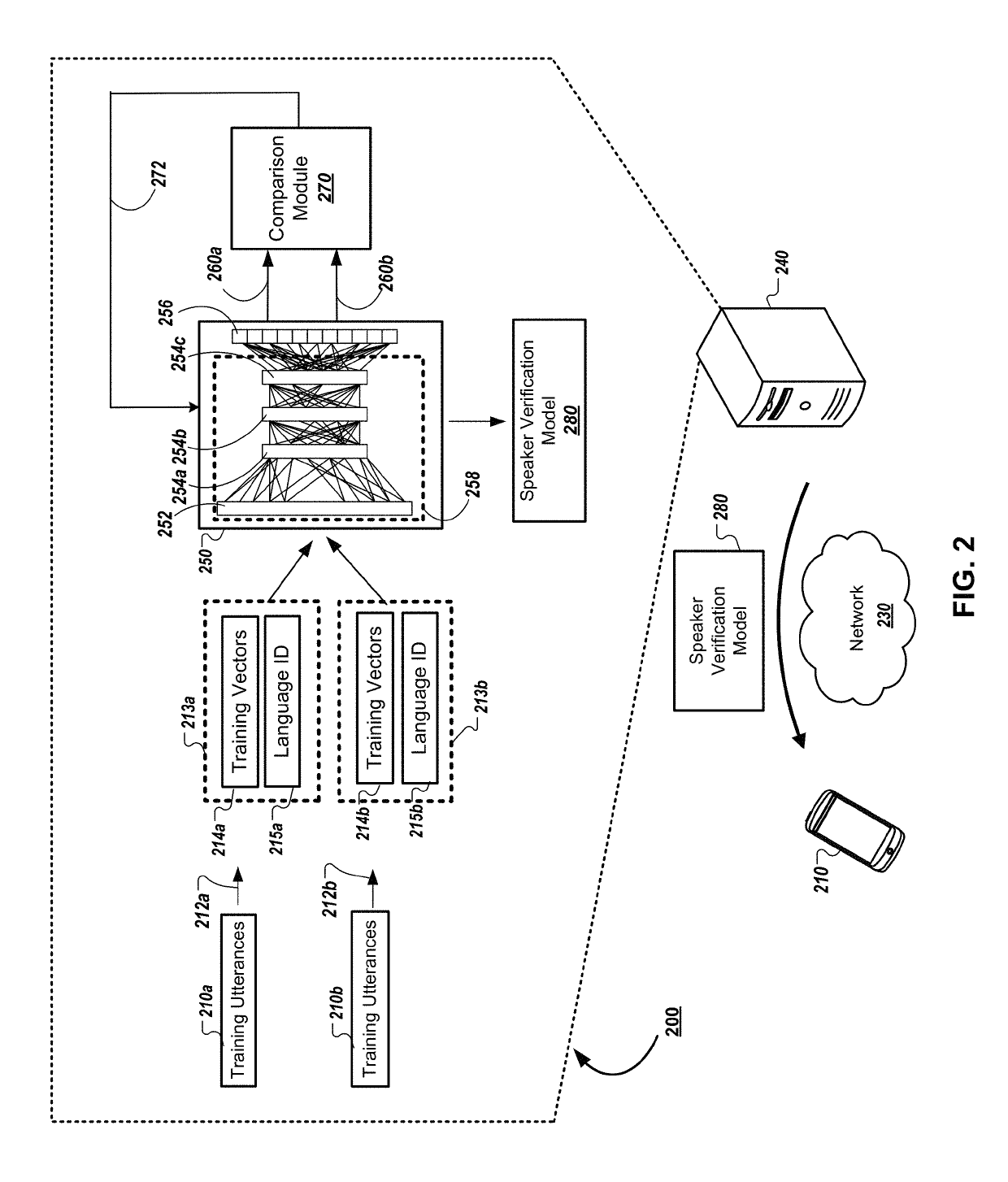Improving speaker verification across locations, languages, and/or dialects
a technology for ensuring the accuracy of speakers and dialects, applied in the field of speaker verification, to achieve the effect of improving accuracy, facilitating updating, and facilitating distribution
- Summary
- Abstract
- Description
- Claims
- Application Information
AI Technical Summary
Benefits of technology
Problems solved by technology
Method used
Image
Examples
Embodiment Construction
[0026]In some implementations, a system provides a language-independent speaker verification model, which can be a model based on a neural network, to a user device. The language-independent speaker verification model is trained, prior to installation on the user device, based training data that includes (i) utterances from multiple different users and (ii) vectors indicating languages or locations corresponding to the respective utterances. Once installed on the user device, the language-independent speaker verification model may be used to verify the identity of a user of the user device without subsequent training of the language-independent speaker verification model. While the user device may obtain and use utterances of the user to enroll the user, the model itself does not need to be trained based on any utterances of the user of the user device.
[0027]As used herein, a “language-independent” speaker verification model refers to a single model that can be used to accurately ve...
PUM
 Login to View More
Login to View More Abstract
Description
Claims
Application Information
 Login to View More
Login to View More - R&D
- Intellectual Property
- Life Sciences
- Materials
- Tech Scout
- Unparalleled Data Quality
- Higher Quality Content
- 60% Fewer Hallucinations
Browse by: Latest US Patents, China's latest patents, Technical Efficacy Thesaurus, Application Domain, Technology Topic, Popular Technical Reports.
© 2025 PatSnap. All rights reserved.Legal|Privacy policy|Modern Slavery Act Transparency Statement|Sitemap|About US| Contact US: help@patsnap.com



